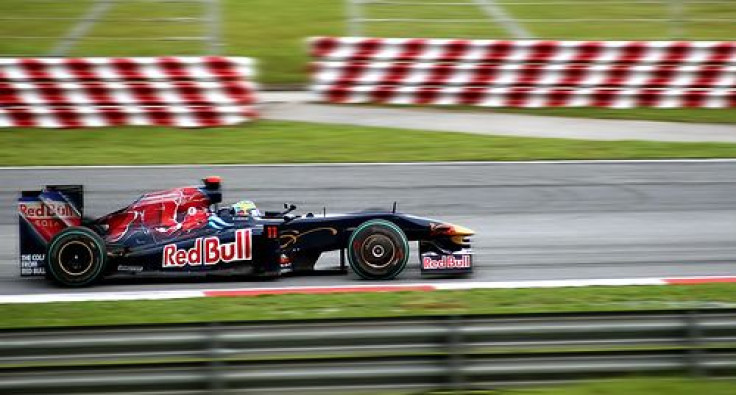Formula 1 Races Up To 8,500 Times Louder Than Recommended Daily Exposure Levels: Ear Plugs, Anyone?

For Formula 1 fans, the mechanical squeal of passing cars is music to their ears — the approaching whine growing in intensity, peaking as their favorite driver whizzes by trackside and fading as the car snakes into the oncoming curve. While this experience is often considered as integral to the race as the cars themselves, new research into the sport suggests the scariest part isn’t the high speeds or hairpin turns; it’s the noise.
Acoustical engineer Craig Dolder, of the University of Texas at Austin, will present his findings at the 166th meeting of the Acoustical Society of America (ASA) later this week. The audience will learn about Dolder’s curiosity of loudness, and how he paid a visit to a Formula 1 Grand Prix in Montreal to better understand the acoustics of the sport. Positioning himself at various points along the track, often at a normal viewing distance of 25 feet, he arrived at several noise levels that all but obliterated the national guidelines for occupational safety.
"I've always wanted to go to one of those races," Dolder said in a statement. "So I made the arrangements, and then I thought to myself: This is going to be really loud. What do I need to wear to protect myself?" He searched online but found no conclusive evidence. Formula 1 diehards championed the purist approach (i.e. no protection, whatsoever), while others pushed the mild compromise of ear muffs or in-ear plugs, with others still favoring the live equivalent of a muted broadcast: noise-cancelling headphones.
Unhappy with the scattered data, Dolder took to the track himself. "I thought the information should be out there,” he said, “so people could make a more informed decision about what to wear for hearing protection.” And according to his results, the answer he’s likely to advise at the conference will be “the maximum protection.”
In the United States, two groups oversee worker safety, the Occupational Safety and Health Administration (OSHA) — the arm of the U.S. Department of Labor responsible for enforcing safety laws — and the National Institute for Occupational Safety and Health (NIOSH), which performs the research that eventually informs those laws. Part of both agencies’ responsibilities is ensuring people do not come into harm as a result of their workplace being too loud. Each agency carries a different standard. For NIOSH, workers should not exceed an 8-hour average of 85 decibels. OSHA, meanwhile, suggests 90 decibels. As Dolder notes in his experiment, NIOSH’s standards tend to be far stricter than OSHA’s.
Experts often warn against excessive exposure to loud noises, which can rupture ear drums. Noise is measured in bels, with a decibel (dB) equal to one-tenth of a bel. The decibel is measured on a logarithmic scale, as a ratio, not a number, which means that 60 dB — the volume of normal conversation at a distance of three feet — is 10 times louder than 50 dB and 100 times louder than 40 dB, or roughly the ambient volume of a library. The upper threshold for human hearing, when a noise starts to become painful, is around 130 dB, or 10 million times louder than normal conversation. Formula 1 races routinely hit 130 dB.
By Dolder’s measure, the loudest part of any Formula 1 race occurs right at the end of a hairpin turn, before a straightaway, when the driver shifts gears and accelerates out of the turn. Without hearing protection, a spectator would receive an estimated 234 percent of his or her daily allotted exposure, according to OSHA’s standards. But as Dolder notes, this pales in comparison to NIOSH’s guidelines, which would put the same spectator as having received 8,585 percent of the daily noise allotment. However, Dolder concedes that both agencies advise against persistent high-level noise exposure — the one-time exposure to a Formula 1 race won’t necessarily be deafening.
Still, unless all audience members choose to stand at the beginning of an S-curve, where noise only hits 53 percent of the daily recommended amount, he advised people to put their fears of bandwagoning aside and invest in a quality pair of earmuffs or ear plugs.
"You will still feel [those loud noises] in your body," he said. "But it's not worth the risk of exposing yourself to that noise unprotected."



























